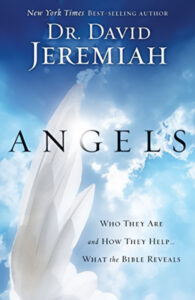Margaret Best Author Newsletter

In Like a Lion, Out Like a Lamb
March roars in like a lion
So fierce,
The wind so cold,
It seems to pierce.
The month rolls on
And Spring draws near,
And March goes out
Like a lamb so dear.
by Lorie Hill
During the month of March, we look at how different religions and philosophies think about the supernatural entities called Angels. Various religions and philosophies have differing ideas about angels
Angels in Different Religions

Zoroastrianism
The concept of spiritual beings has been around for a long time. The entity we call an angel has different names in various world religions, both ancient and modern. The early Persian empire (559 Before Christ to 651 After Christ) practiced a religion we name Zoroastrianism. The faith is still exercised in parts of Iran and India.
Those who practice Zoroastrianism pick a patron angel for their protection, and throughout their lives are careful to observe prayers dedicated to that angel. These Archangels or Beneficent Immortals are the highest spiritual beings created by Ahura Mazda (God).

Buddhism
The equivalent to angels in Buddhism is devas. Devas are spiritual beings by nature. Their bodies are often referred to as energy or light. Devas do not interfere with human affairs, but they have been known to applaud good deeds. The Kwan-Yin depicted above is widely viewed as a sort of Buddhist angel, particularly in China.

Hinduism
Hinduism does not have any spirit with attributes of our angels, however, there are minor gods or devas called “shining ones” who, like Katarangama-deviyo pictured above, help or hinder people’s spiritual journey.

Islam
The belief in angels is one of the six pillars of the Islam religion or faith. The pillars are belief in Allah, His Angels, His Books, His Messengers, the Last Day and that Predestination, both good and bad comes from Allah. Islam angels are created from light, they have wings. They are different in size and status and do not eat or drink. There are many angels only known by Allah. Angels have names but we only know four of them. Their names are 1. Jibril (Gabriel) 2. Mikel (Michael) 3. Izrail (Azrael) 4. Israfil-the angel that places the soul in the body and sounds the last judgement.

Christianity
By fr Christians have embraced the study of angels more than other faiths. The Old Testament is full of angels, and the New Testament gives credence to the existence of angels. The Bible notes a hierarchy of angels and their purposes as messengers of God and protectors of human beings. This hierarchy or order of angels consists of nine different tiers: Seraphim, Cherubim, Thrones, Dominions, Virtues, Powers, Principalities, Archangels, and the lowest that help man are simply termed Angels. Although often depicted with wings and halos, the angels of the Bible are often referred to simply as visions in a human’s dreams or as vestiges of men in white.
Judaism
Different from other religions, Jews are forbidden to create any image of gods, so they use Hebrew letters from the bible to represent God. Various terms for angels include MALACHIM, God’s messengers, ministers, heavenly hosts, the armies of heaven and demons.
Angelolatry
Angel Whispering
A form of clairvoyance, like fortune telling, with angels instead of a crystal ball which falls between religion and soothsaying is termed angel whispering.
Questions and Answers
- Who was the first theologian to discuss the reality of angels and what did he say?
- Do all angels have wings?
- When did angels get their wings?
- Do we become angels when we die?
Who was the first theologian to discuss the reality of angels and what did he say?
The greatest genius the early church ever produced was Origen of Alexandria (c. 185-c. 253) also known as Origen Adamantiums. A prolific writer who wrote roughly 2,000 treatises in multiple branches of theology was one of the most influential and controversial figures in early Christian theology. Origen wrote about the preexistence of souls. He believed that before God created the material world, He created a vast number of spiritual intelligences. These spiritual beings were devoted to God with the love for their creator, but after a while some love cooled off and those intelligences became demons. The intelligences who cooled off the least became angels.
Origen Quotes About Angels
When anyone prays, the angels that minister to God and watch over mankind gather round about him and join with him in prayer.
This is a part of the teaching of the church that there are certain angels of God and certain good influences that are his servants in accomplishing the salvation of mankind.
Do all angels have wings?
https://www.historytoday.com/archive/history-matters/how-angels-found-their-wings
The angels of the Bible were not winged. In the Old Testament, angels are often not clearly distinguished from humans. The New Testament letter to the Hebrews states: ‘Do not forget to show hospitality to strangers, for by so doing some people have shown hospitality to angels without knowing it.’ When angels are introduced in the New Testament, they are distinguished from ordinary humans by markers like gleaming white robes or a countenance like lightning—but no wings.
The winged Cherubim and Seraphim are figures derived from the Near Eastern tradition of winged zoomorphic guardian figures and are not angels as we know them.
In the catacombs of Priscila in Rome an unknown artist from the middle of the third century painted the first Christian depiction of an angel, the Archangel Gabriel without wings, and even as late as the mid-fourth century, the Roman sarcophagus of Junius Bassus still depicted the angel form the story of the sacrifice of Isaac without wings.
When did angels get their wings?
https://en.wikipedia.org/wiki/Angels_in_art
Early Christianity contained an amalgam of Near Eastern and Greco-Roman culture Sometime during the third and fourth centuries Christians viewed angels as winged beings. The earliest representation of angels with wings is on the Prince’s Sarcophagus, discovered at Ariguzel near Istanbul in the 1930s and attributed to the time of Theodosius 1 (379-395). From then on Christian art represented angels with wings, as in the cycle of mosaics in the Basilica di Santa Maria Maggiore (432-440).
Do we become angels when we die?
https://www.christianity.com/wiki/angels-and-demons/do-we-become-angels-when-we-die.html
People believe all sorts of things. One of them is that upon death, we become angels in heaven. The Bible, however, says in Psalm 8:5 “You have made human beings a little lower than the angels and crowned them with glory and honor. Genesis 1:25 says ‘God created everything after its own kind. There are different kinds of angels, but they are all angels. There are different kinds of people, but we are all people. Mankind was made in the likeness of God, and given free will. When Adam and Eve sinned, mankind lost holiness and needed salvation, so God sent his only son to atone for our sins and bring salvation to humankind.
My Angel Experience March
Since this month’s angel essay is about how angels are thought of in various religions, I decided to share my experience with a somewhat scary event with my children at the zoo in Cairo, Egypt.
One day my friend and I took our four children ages 5, 6, 10 and 12 to the Cairo city zoo. After about two hours walking along the sidewalk with no problem, no harassment or scare, we left the area and waited for our ride outside the zoo gate.
With our back to the fenced area, my son noticed a rock had been thrown over the fence directly at us. “Mom,” he said. “They’re throwing rocks at us.”
My second son turned, picked up a rock and started to throw it back at the offending throwers, but I admonished him and told him to put the rock down. “Don’t worry, I’m praying.”
My friend and I turned our backs to the fence gathered the children in front of us and I prayed aloud, “Father, help us. Please send your angels to surround our little area so we are not hit with the flying rocks.”
After a short time, our ride arrived. No rocks had penetrated our area.
I don’t know if this was simply happenstance, but I attribute our safety to angels. I saw no angels, but I’m sure they were there watching and protecting my family as I prayed.
If you’ve experienced similar circumstances, please share them in the comment section.
Daylight Savings Time

Twice a year, most Americans change the clocks from Standard Time to Daylight Savings Time and back. Why? Daylight Savings Time is credited with reducing crime, saving lives, and preventing traffic accidents. The primary reason for the twice-yearly shift comes from the energy savings it is purported to have. The U.S. experiences nearly a one-percent daily savings on energy during the yearly Daylight-saving Time period. Hawaii, most of Arizona, Puerto Rico, the US-Virgin Islands, Northern Mariana Islands, Guam, and American Samoa do not comply with this custom.
For some, this practice is a bother, which has led to calls to end the practice of Daylight-Saving Time. The U.S. Senate passed legislation making daylight savings time permanent starting in 2023, ending the twice annual changing of clocks. The Senate approved the measure, called the Sunshine Protection Act. The bill lingers in the House of Representatives.
Women’s History Month

Since 1987, the United States has formally recognized March as National Women’s History Month. The National Women’s History Alliance designates a yearly theme,. The 2023 theme is “Celebrating Women Who Tell Our Stories.” The theme recognizes women who have been active in all media and storytelling, including print, radio, TV, stage, screen, blogs, podcasts, news, and social media. In the comment section, please write the name of a woman you would like to recognize this month and why.
St. Patricks Day
You don’t have to be Irish to celebrate St. Paddy’s Day on Friday, March 17, 2023. Everyone will be wearing green, drinking beer, singing “When Irish Eyes Are Smiling,” and listening to Scottish bagpipes. Throw in a leprechaun or two, a rainbow, and a pot of gold to celebrate the day with flare. St. Patrick’s Day is celebrated in more countries than any other feast day primarily due to America’s enthusiasm for the holiday. Although it is not an official holiday in the U.S., Parades are the mainstay of St. Patrick’s Day festivities.
The first parade held in St. Patrick’s honor took place in America, not Ireland, in 1601 in St. Augustine, Florida. Marches were held in 1737 in Boston when a few Protestants strolled down the street honoring St. Patrick, and the first New York St. Patrick’s Day parade occurred in 1762. The 1762 parade was organized by Irish troops serving in British colonies. Today the world’s biggest St. Patrick’s Day celebration is the annual parade in New York City, where two million spectators line the parade route, all claiming Irish heritage—at least for the day.
“Erin, go, Bragh!”
Who was Saint Patrick?
St. Patrick was born in Roman Britain in 387 and died in Ireland in 461. At fourteen years old, he was captured by Irish pirates during a raiding party and taken to Ireland as a slave to herd and tend sheep. Ireland was a land of Druids and pagans, but Patrick turned to God. His captivity lasted until he was twenty when he escaped, and after a dream from God, he was told to leave Ireland by going to the coast. Sailors on the coast took him back to Britain, where he was reunited with his family. The vision prompted his studies for the priesthood. He was ordained by St. Germanus, the Bishop of Auxerre, and later ordained a bishop and sent to take the Gospel to Ireland. He worked and converted many people building churches throughout the land for 40 years. Many miracles are attributed to him. After years of living in poverty, suffering, and traveling, he died on March 17, 461.

The True story of the Leprechauns
https://www.discoveringireland.com/our-vacation-reviews/
In Irish folklore a Leprechaun is one of the faerie folk and are often associated with faerie forts, the ancient Celtic settlements. According to popular belief, this small elf like figure is pictured wearing traditional emerald green clothes and is often sporting a beard and smoking a pipe.
The Leprechaun is a cobbler by trade, but he has a secret stash of gold that he must reveal if you can capture him. But by his nature the Leprechaun is cunning and mischievous and will try anything not to hand over his gold.
In one tale, a young farmer captures a Leprechaun and forces him to hand over his gold. The Leprechaun says that the gold is hidden beneath a tree in the woods and shows him which one it is. The farmer ties his red scarf around the tree and after making the Leprechaun promise not to remove the scarf he heads to his farm to get a shovel.

But when the farmer returns he finds that the Leprechaun has tied a red scarf around every tree in the woods.
The name Leprechaun is thought to have a number of origins, from the Irish Gaelic for shoemaker leath bhrógan to the Irish for pigmy, leipreachán.
Book Of The Month
Angels: Who They Are
and How They Help…
What the Bible Reveals
Dr. David Jeremiah 1996, 2006
Available on Amazon
Excellent study of Angels. I read this
book on Kindle and found many interesting facts supported by Biblical and Theological
study. The writing is for the lay person and quite understandable with examples. I think I will keep this book as a handy reference.
Join Me at My Book Signing
Join me at the book signings of my author friends All Booked up in Colony Plaza on Tuesday, March 14 from 11 am to 2 pm
Saturday, March 18, 11 am – 2 pm at Wildwood Antique Mall.

